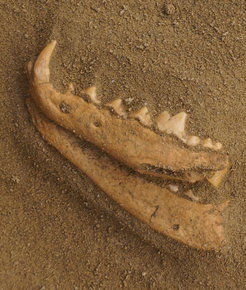Ancestral interactions between human and non-human animals in the Americas

This project investigates the long-term development of human-animal interactions across the Americas, exploring how early human populations adapted to diverse, and often extreme, environments, impacted endemic fauna, utilized and managed animal resources, and navigated through environmental changes. To address these questions, we conduct large-scale zooarchaeological, palaeoproteomic (Zooarchaeology by Mass Spectrometry: ZooMS), and stable isotope analyses of faunal assemblages from multiple archaeological sites across North and South America, spanning from the late Pleistocene to mid Holocene.
In North America, our research examines cultural diversity, resilience, and adaptation to environmental changes during the terminal Pleistocene to early Holocene transition. By analyzing faunal remains from the Cooper’s Ferry/Nipéhe site, located in the Nez Perce homeland, we aim to uncover insights into traditional subsistence practices and ways of life. This work is carried out in close collaboration with the Nez Perce Tribe to ensure reciprocal knowledge exchange, collaborative decision-making, and integration of traditional Nez Perce perspectives into our interpretations.
In South America, we explore the adaptive flexibility of some of the first human inhabitants in Neotropical environments through the analysis of faunal remains from the late Pleistocene Lapa do Boquete site in Brazil. Additionally, we investigate the early to mid Holocene transition to sedentary settlements and shifts in food production and animal management strategies at the Alcaparros site in Colombia. To enhance the effectiveness of ZooMS in South American contexts, we will develop reference markers for a wider range of archaeologically important taxa (e.g., sloths, armadillos, anteaters, large rodents), thereby expanding the potential of ZooMS for faunal identification in South American contexts.










